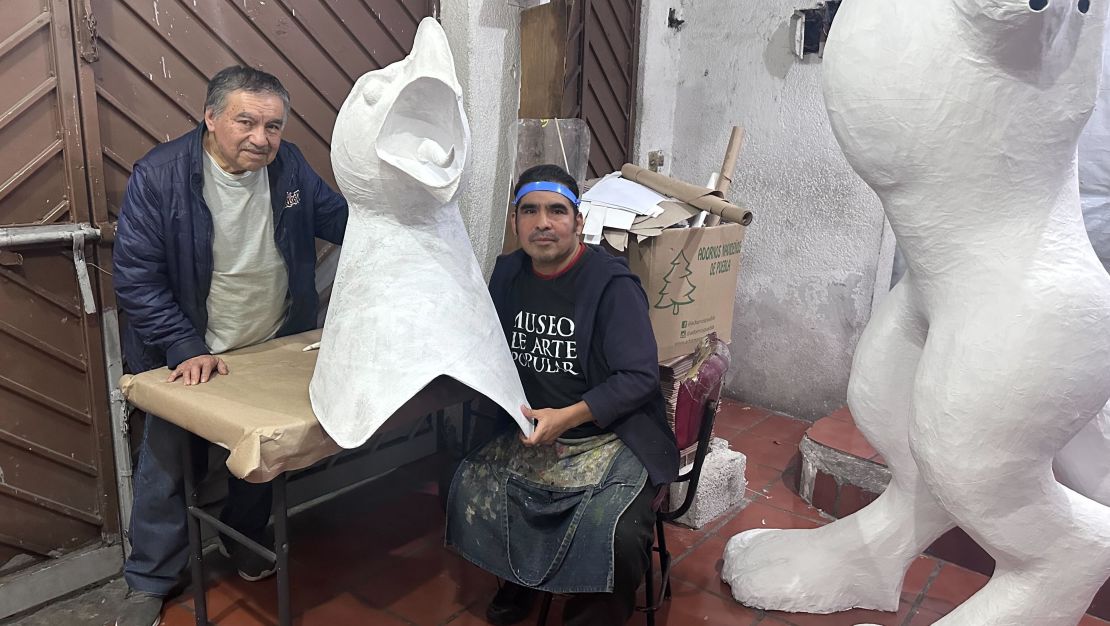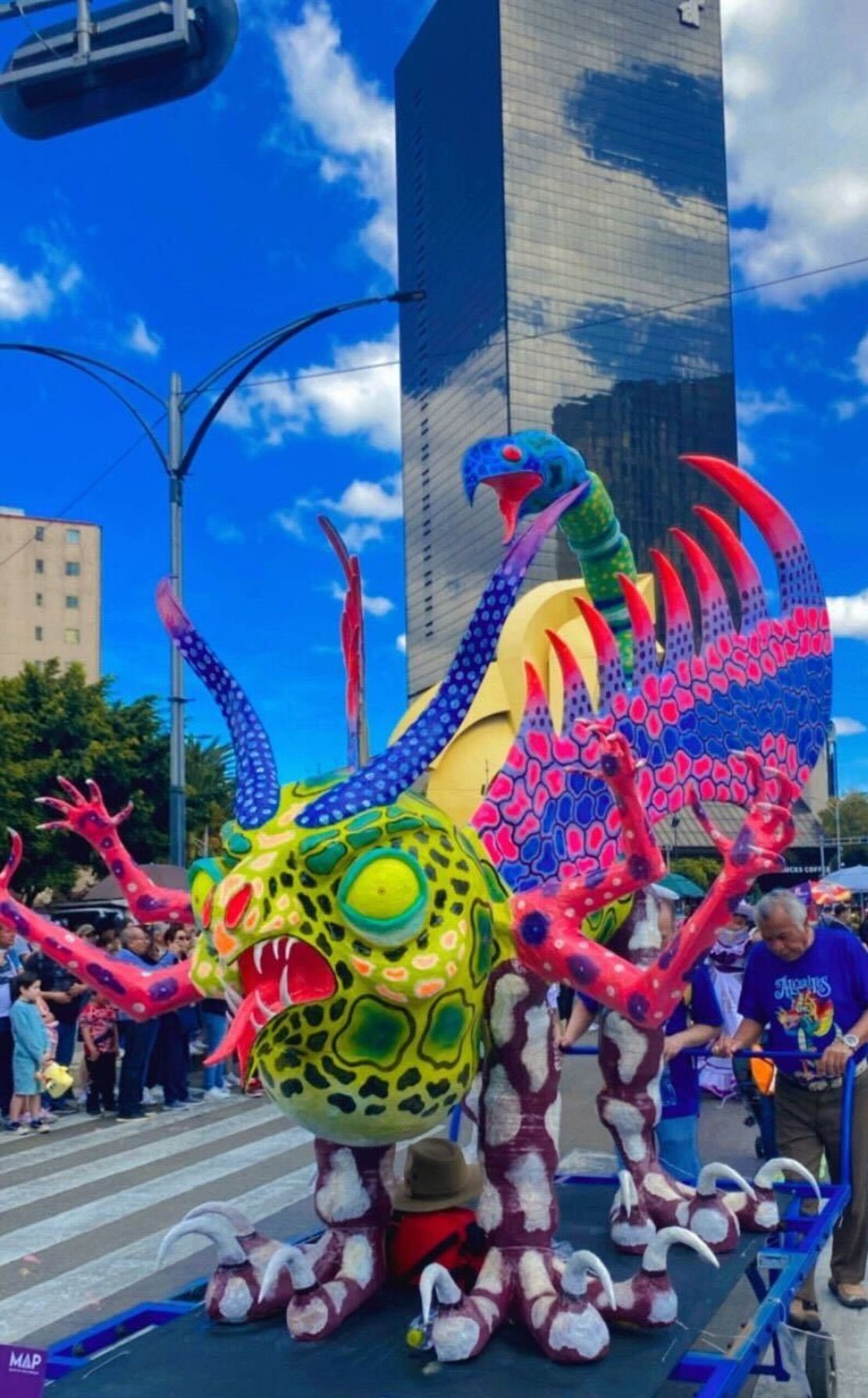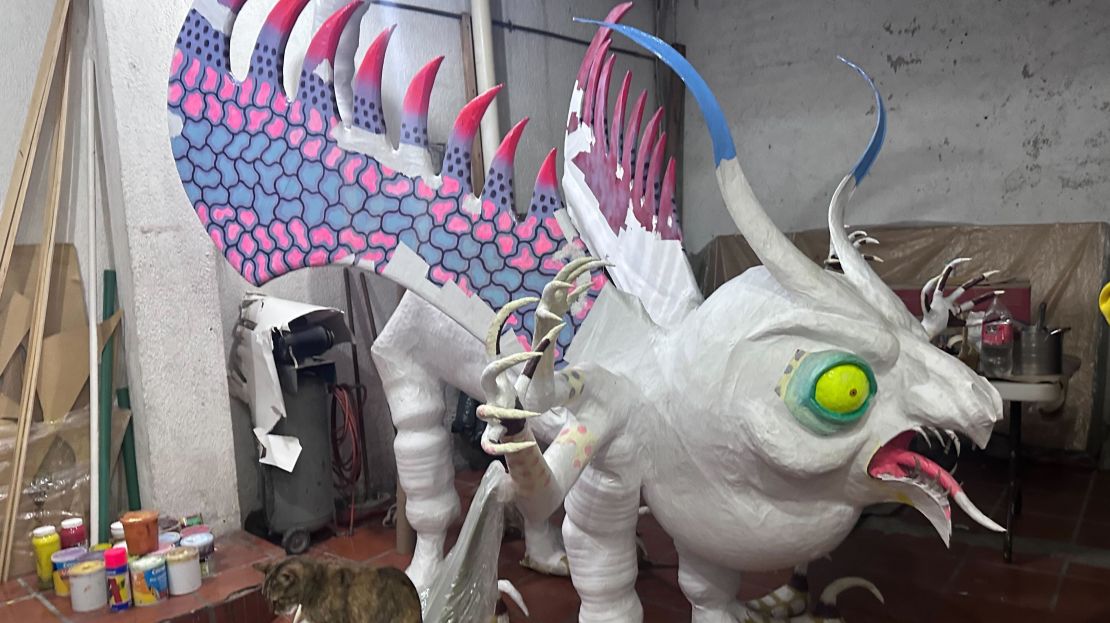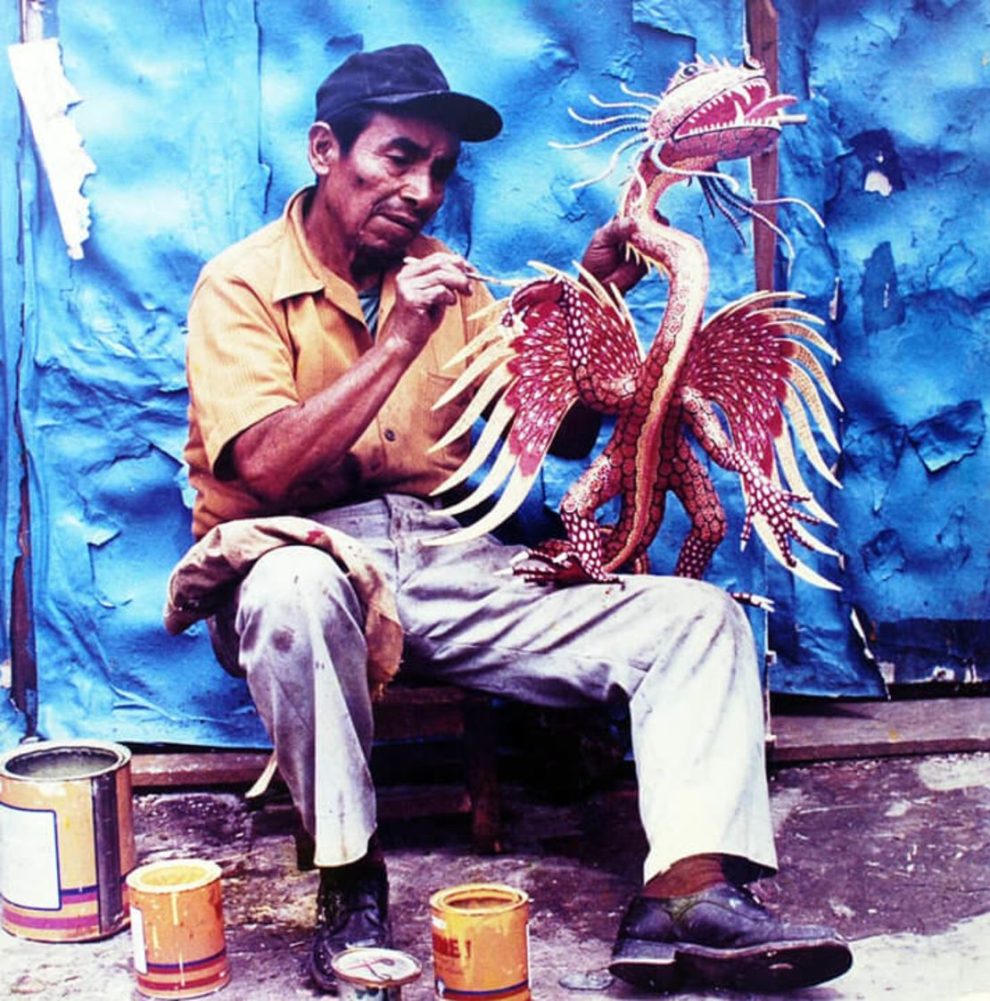( Spanish) – On October 19, hundreds of giant alebrijes paraded on floats through the main avenues of Mexico City. What are they and what do they represent?
Alebrijes are fantastic or mythical creatures made of cardboard that were born from a deep dream of the Mexican craftsman Pedro Linares López, who fell ill and became unconscious and, according to him, the strange creatures were revealed to him.
“When he wakes up from that trance he begins to feel an improvement in his health and remembers what he had dreamed of. As a result, he has the need to replicate what he saw, his grandson Ricardo Linares tells from his workshop in the Merced neighborhood in the center of Mexico City.
“First he tried it with clay, then with other materials until he succeeded with cardboard, a craft to which he dedicated his entire life.”
Ricardo, who is the third generation of cartoneros in his family, says that his grandfather may have fallen ill from a poorly treated wound after participating in the armed conflict known as the “Cristera War.” which ended in 1929. Another version is that he experienced catalepsy, a central nervous disorder characterized by immobility, muscle rigidity and decreased sensitivity to pain, according to the Institute of Security and Social Services of State Workers (ISSSTE).
With an apron and paste in his hands, he details more about his grandfather Pedro’s dream: “He arrives at a kind of forest where he sees the trees and their branches; the stones, the clouds, begin to take the form of animals with claws, wings and teeth,” says Linares, who affirms that the word alebrijes did not exist before Pedro Linares dreamed of it. “Then, in that place these creatures begin to speak, they said: ‘alebrijes.’ “My grandfather says that they guided him, and suddenly he woke up.”

Although it is not clear what happened to Pedro Linares, it was as a result of this episode that he began to capture these figures classified as “one of the greatest expressions of popular culture in Mexico” and Intangible Cultural Heritage from Mexico City, according to the Ministry of Culture. In addition, they have been recognized internationally with exhibitions in places such as the Rockefeller Center in New York and the Lille 3000 Festival in France.
Alebrijes have also been inspiration for filmmakers such as Judith Bronowski and François Reichenbach, who continually visited Linares’ workshop and even bought several alebrijes, according to Pedro Linares’ son, Miguel Linares.
In 1960, Miguel began to experiment with the shape, style, size and colors of the alebrijes, achieving the figures as they are known today. His father started with rigid figures of about 50 centimeters with dark colors in gray, brown and green tones. Miguel was the one who took them on a large scale with measurements ranging from 2 to 5 meters high. To make an alebrije you only need paper, paste and paint, the basis for making a piñata.

For Miguel Linares, who has been in the cardboard making trade for more than 50 years, the process of creating an alebrije is “inexplicable”, since it can start with one shape, and suddenly, he changes his mind and does something else. He explains that there is no specific part to start making the figure, because sometimes it starts with the head, other times with the wings or the tail and even with the soul.
“An alebrije is the best, there is no limit to the creativity to make it, no one is repeated and we can always create a better one,” says the son of Pedro Linares, who remembers that since he was in primary school he saw how his father worked with the cardboard pieces and helped him.
“My dad’s work, I didn’t understand it. They were strange things that at first I didn’t understand how or why he did them. Little by little I began to understand that he was trying to make them as he saw them in his nightmares and I began to grow fond of them,” says Miguel.

Before the alebrijes, in the workshop they created representative figures of Mexican culture: piñatas, skulls, masks, catrinas, and the famous judas that are burned in the festivities of “Sábado de Gloria” during Holy Week, which the painter Diego collected Rivera and that today can be seen in the Museo Casa Estudio Diego Rivera y Frida Kahlo.
“What is known is that my grandfather met Diego Rivera in a pulquería in Coyoacán and made several orders for Judas and skulls,” says Ricardo.
One of Ricardo Linares’ greatest satisfactions is passing on this tradition to his daughter Natalia. For her, dedicating herself to cardboard making “is a source of pride,” even in times of social media.
Cartonería is a Mexican popular art technique that dates back to the viceregal era when it was used for evangelization with objects such as judas, nativity scenes and piñatas, points out the National Fund for the Promotion of Crafts (Fonart).
Since 2007, the Museum of Popular Art (MAP) has held the Monumental Alebrijes Parade and Contest annually in the country’s capital with the aim of preserving and honoring this Mexican craft.
Dozens of monumental alebrijes made by local artisans participated in this year’s edition. The first three places receive financial incentives and all the alebrijes will remain on display on Paseo de la Reforma avenue until November 3.














Add Comment